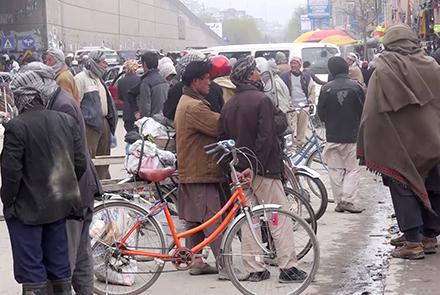The Ministry of Economy says that from the 15 million Afghan citizens who have the ability to work, 6.8 million are engaged in the job market while others are not interested in seeking jobs.
Deputy Minister of Economy for Policy, Mohammad Ismail Rahimi, said government is committed to providing the ground for investments, but added that the private sector could also increase investment to reduce the unemployment rate in the country.
Rahimi, who addressed the Afghanistan Youth to Business Forum in Kabul, said government is working on a strategy titled “Productive Afghanistan”, which will bring seismic changes in the job market and economic development within the next five years.
The strategy was introduced by the Ministry of Economy last year in November.
“From an economic point of view, almost half of the working age population is not interested in working and they are not interested in seeking jobs in the market,” said Rahimi.
The head of the National Procurement Authority, Ilham Omar Hotaki, said the unemployment challenges should be removed so that Afghanistan can reach lasting peace.
“If we want lasting peace, we should pay attention to creating job opportunities,” Hotaki said.
Last year on December 10, the International Labor Organization (ILO) said findings by different organizations show the rate of unemployment in Afghanistan is between 25 percent and 30 percent and indicates Afghanistan has the highest number of unemployed workforce in the world.
ILO figures show that about 400,000 new people enter the workforce and market in the country every year.
The figures from the Ministry of Labor, Social Affairs, Martyrs and Disabled show that their findings reveal the rate of unemployment and lack of sufficient work in the country is at 35 percent.
Meanwhile, Abdulbasit Mawaj, head of the AIESEC, an international non-governmental in Kabul, which hosted the forum, said Afghan youth need more attention in terms of provision for job opportunities.
“The youth do not need only a university document… they need someone to support them as we did today,” he said.
At the end of the forum, from the schemes of 250 youth participants, three schemes will be selected and the National Procurement Authority and a number of private banks will prepare the ground for their implementation.

